During a spontaneous food trip to Isabela province, I stumbled upon what locals kept calling their pride and joy: Pancit Cabagan. It was a sweltering afternoon when my tricycle driver, Mang Tony, insisted we stop at this small carinderia in downtown Cabagan that had been serving the same noodle recipe for three generations.
The moment the steaming plate landed on our table, I knew this wasn't your ordinary pancit. The noodles glistened with a rich sauce that was neither too thick nor too thin, while the aroma of garlic and pork filled the air.
That first bite was a revelation. The combination of crispy chicharon, tender pork, and perfectly cooked vegetables created a symphony of textures that made me understand why this dish has been passed down through generations. After much friendly convincing (and several more visits to her carinderia), Aling Susan finally shared her family's recipe with me, though she made me promise to keep the tradition alive by cooking it the way it was meant to be made - with patience, pride, and plenty of love.
This recipe is my homage to that unforgettable afternoon in Cabagan, where a simple plate of noodles taught me that sometimes the best culinary treasures are found in the most unexpected places.
Jump to:
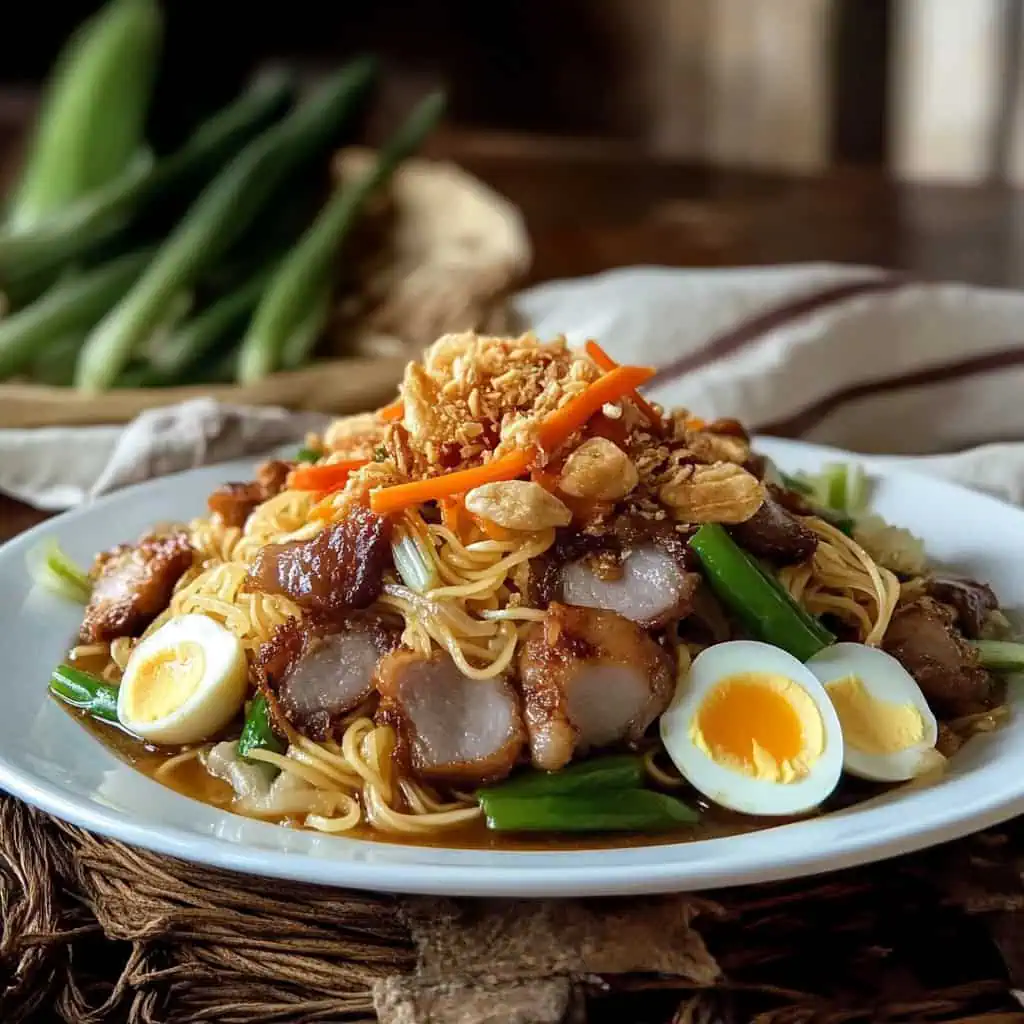
Why You'll Love This Recipe
- Authentic Flavors: Experience the genuine taste of Isabela province's beloved noodle dish
- Perfect Balance: Combines crispy, tender, and chewy textures in every bite
- Customizable: Easy to adjust spice levels and ingredients to your preference
- Make-Ahead Friendly: Components can be prepared in advance
- Complete Meal: Provides a balanced combination of protein, vegetables, and carbohydrates
- Special Occasion Worthy: Impressive enough for celebrations yet simple enough for family dinners
Ingredients
The ingredients in Pancit Cabagan were thoughtfully selected to create a harmonious balance of flavors and textures. Fresh egg noodles form the foundation, absorbing the rich sauce while maintaining their chewy bite. Pork belly adds savory richness, while pork liver contributes a distinctive depth.
The vegetables—cabbage, French beans, and carrots—provide fresh crunch and color. The sauce combines chicken stock, soy sauce, hoisin, and oyster sauce for a complex umami profile that's neither too thick nor too thin. Crushed chicharon and quail eggs serve as the crowning glory, adding indulgent crispy and creamy elements that elevate the dish beyond ordinary noodle preparations.
Each component plays a vital role in creating the authentic taste of Isabela province.
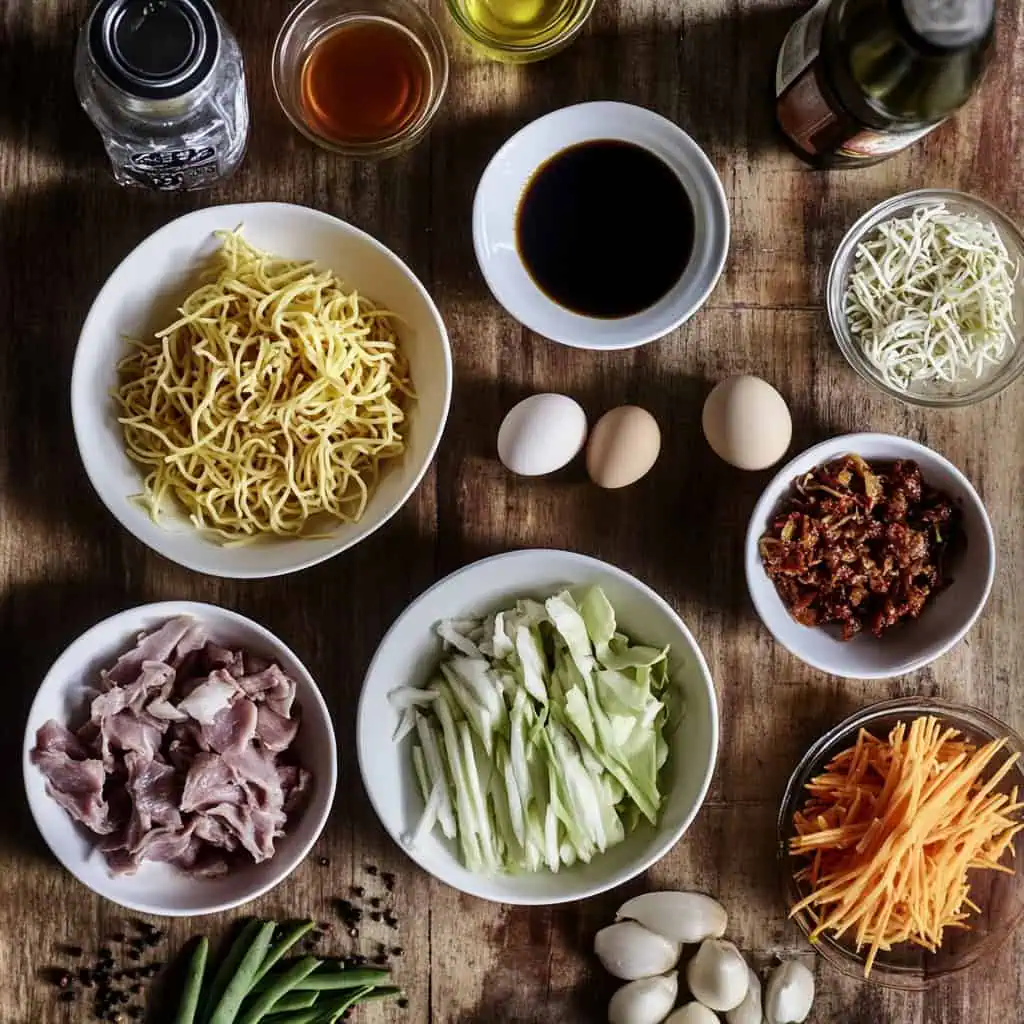
For the Noodles and Protein:
- 500 g fresh egg noodles (pancit miki sariwa)
- 200 g pork belly, thinly sliced
- 100 g pork liver, sliced
- 1 cup pork chicharon, crushed
- 2 dozen quail eggs, hard-boiled and halved
For the Vegetables:
- ½ head cabbage, julienned
- 1 bunch French beans, julienned
- 1 carrot, julienned
- 4 cloves garlic, minced
- 1 onion, finely chopped
For the Sauce:
- 5 cups chicken stock
- ¼ cup soy sauce
- 1 tablespoon hoisin sauce
- 2 tablespoons oyster sauce
- 3 tablespoons cornstarch
- Fish sauce to taste
- Freshly ground black pepper
- Salt to taste
For Serving:
- Lemon or calamansi wedges
- Additional crushed chicharon
Equipment
- Wok (Kawali): Essential for achieving the perfect stir-fry technique and sauce consistency. The high sides and rounded bottom allow ingredients to be tossed efficiently without spilling.
- Strainer: Used for draining noodles properly and removing fried ingredients from oil. A fine mesh strainer works best to catch small bits.
- Sharp Knife: Necessary for julienning vegetables uniformly, which ensures even cooking and presentation.
- Large Mixing Bowl: Helpful for preparing and tossing ingredients before cooking.
- Measuring Cups and Spoons: For precise ingredient portions to maintain the authentic flavor balance.
- Wooden Spatula: Ideal for gentle stirring without breaking the delicate noodles.
- Small Bowls: Used for organizing pre-measured ingredients in the mise en place style, making the cooking process smoother.
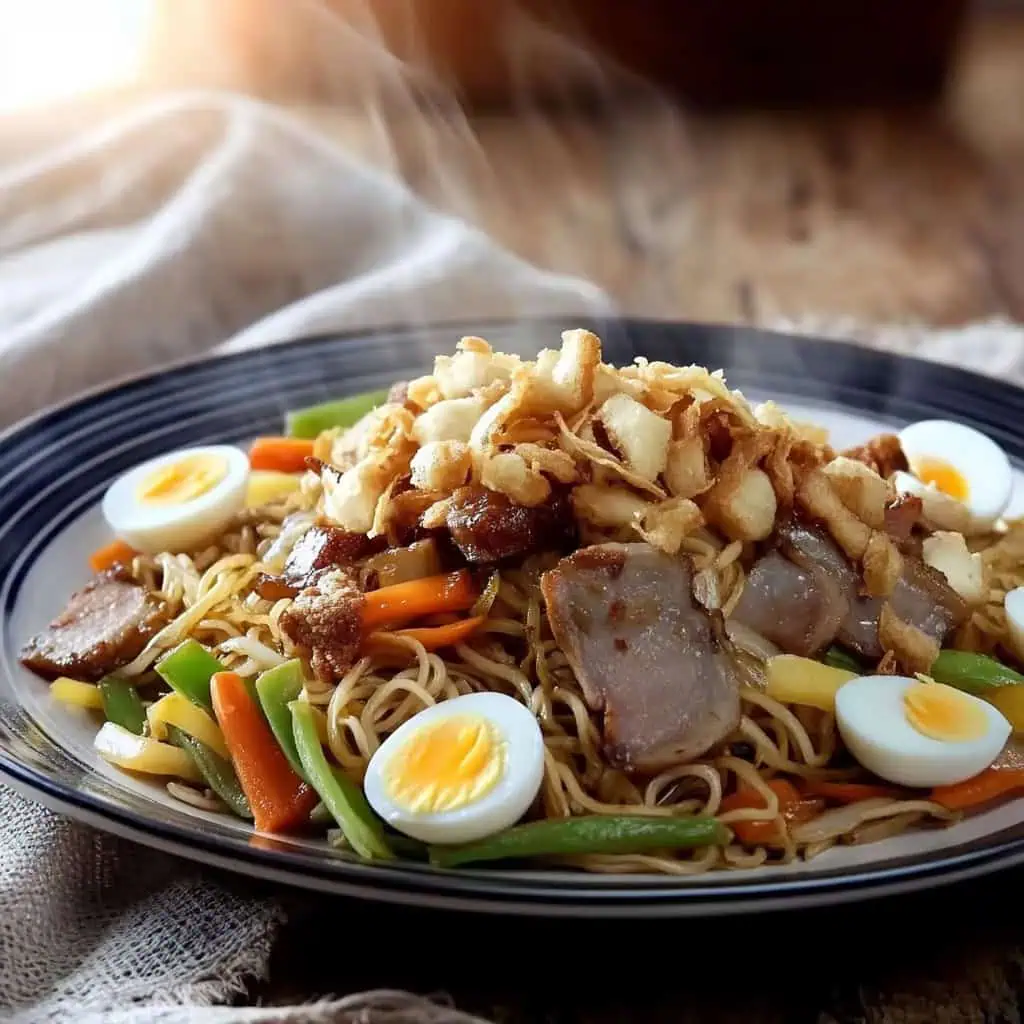
How To Make
- Start by bringing water to a boil and cook your fresh egg noodles until tender but still firm, about 3-4 minutes. Drain them and rinse with cold water to prevent sticking. Set aside.
- Season sliced pork belly with salt. Heat your wok until very hot and add oil. Fry the pork belly until golden brown and crispy, about 5-7 minutes. Remove from the wok and set aside.
- In the same wok, sauté minced garlic until fragrant, about 30 seconds. Add chopped onions and cook until they turn clear, about 2 minutes. Add sliced pork liver and stir-fry for one minute until just cooked through.
- Add julienned carrots, French beans, and cabbage to the wok. Stir-fry for 2 minutes until the vegetables are crisp-tender. Remove everything from the wok and set aside.
- Mix cornstarch with one cup of room temperature chicken stock until smooth. Pour the remaining four cups of chicken stock into the wok. Add hoisin sauce, oyster sauce, and soy sauce. Bring to a boil while stirring. Once boiling, slowly pour in the cornstarch mixture while stirring. Simmer until the sauce thickens enough to coat the back of a spoon, about 2-3 minutes. Season with fish sauce and black pepper to taste.
- Lower the heat to medium. Return the noodles and half of the vegetable-meat mixture to the wok. Gently toss everything together until the noodles are evenly coated with sauce.
- Transfer to a serving plate and top with the remaining vegetable-meat mixture. Add halved quail eggs and sprinkle generously with crushed chicharon. Serve hot with calamansi or lemon wedges on the side.
- For best results, serve immediately while the chicharon is still crispy. Each person can squeeze calamansi over their portion and add extra chicharon as they like.

Tips from Lola's Kitchen
- Noodle Preparation: Slightly undercook the fresh miki noodles and immediately shock them in cold water. This prevents them from becoming mushy when added to the sauce.
- Layering Flavors: Cook ingredients separately and combine at the end for distinct flavors and textures in each bite.
- Oil Choice: Use lard or pork fat if available for authentic taste, but vegetable oil works well too.
- Meat Preparation: Slice the pork belly and liver thinly and uniformly for even cooking.
- Sauce Secret: The key to perfect Pancit Cabagan sauce is balance - not too thick, not too thin. It should coat the noodles without pooling at the bottom.
- Timing Matters: Prepare all ingredients before heating the wok as the cooking process moves quickly once started.
- Chicharon Tip: Add most of the crushed chicharon just before serving to maintain its crispiness.
Substitutions
- Noodles: If fresh miki noodles aren't available, dried egg noodles or even pancit canton can work in a pinch. Adjust cooking time accordingly.
- Meat Options: Chicken thighs can replace pork belly for a lighter version. Skip the liver if preferred or substitute with chicken liver.
- Vegetable Alternatives: Snow peas or green beans can replace French beans. Bell peppers add nice color and crunch.
- Egg Options: Regular chicken eggs (hard-boiled and quartered) can replace quail eggs.
- Sauce Adaptations: Lacking hoisin? Mix a bit of peanut butter with soy sauce and sugar as a substitute.
- Gluten-Free Version: Use rice noodles and tamari instead of soy sauce, with cornstarch or arrowroot as thickener.
- Vegetarian Adaptation: Replace meats with firm tofu and mushrooms, and use vegetable stock instead of chicken stock.
Troubleshooting
- Soggy Noodles: Likely overcooked or left in sauce too long. Solution: Cook noodles al dente and add to sauce just before serving.
- Sauce Too Thick: Add hot chicken stock gradually, a tablespoon at a time, while stirring until desired consistency is reached.
- Sauce Too Thin: Mix 1 tablespoon cornstarch with 2 tablespoons cold water and add gradually while stirring constantly.
- Bland Flavor: Enhance with fish sauce, a dash of MSG (if desired), or additional oyster sauce.
- Vegetables Too Soft: Your wok wasn't hot enough or they cooked too long. Next time, use higher heat and shorter cooking time.
- Burnt Garlic: If garlic burns, start over as it will impart a bitter taste. Use medium heat when sautéing garlic.
- Tough Meat: Slice meat against the grain and thinner. For already cooked tough meat, return to wok with a splash of stock and cover briefly.
Storage & Reheating
- Refrigeration: Store in an airtight container for up to 3 days. Keep noodles, sauce, and toppings separate if possible for best texture upon reheating.
- Freezing: Not recommended as the noodles and vegetables will lose their texture.
- Reheating on Stovetop: Place in a pan with 2-3 tablespoons of water or chicken stock, cover, and heat on medium-low until just warmed through. Avoid overheating to prevent mushy noodles.
- Microwave Reheating: Sprinkle with a few drops of water, cover with a microwave-safe lid or damp paper towel, and heat in 30-second intervals, stirring between each interval.
- Refreshing Leftovers: Add fresh crushed chicharon, a squeeze of calamansi, and freshly ground pepper after reheating to revive flavors.
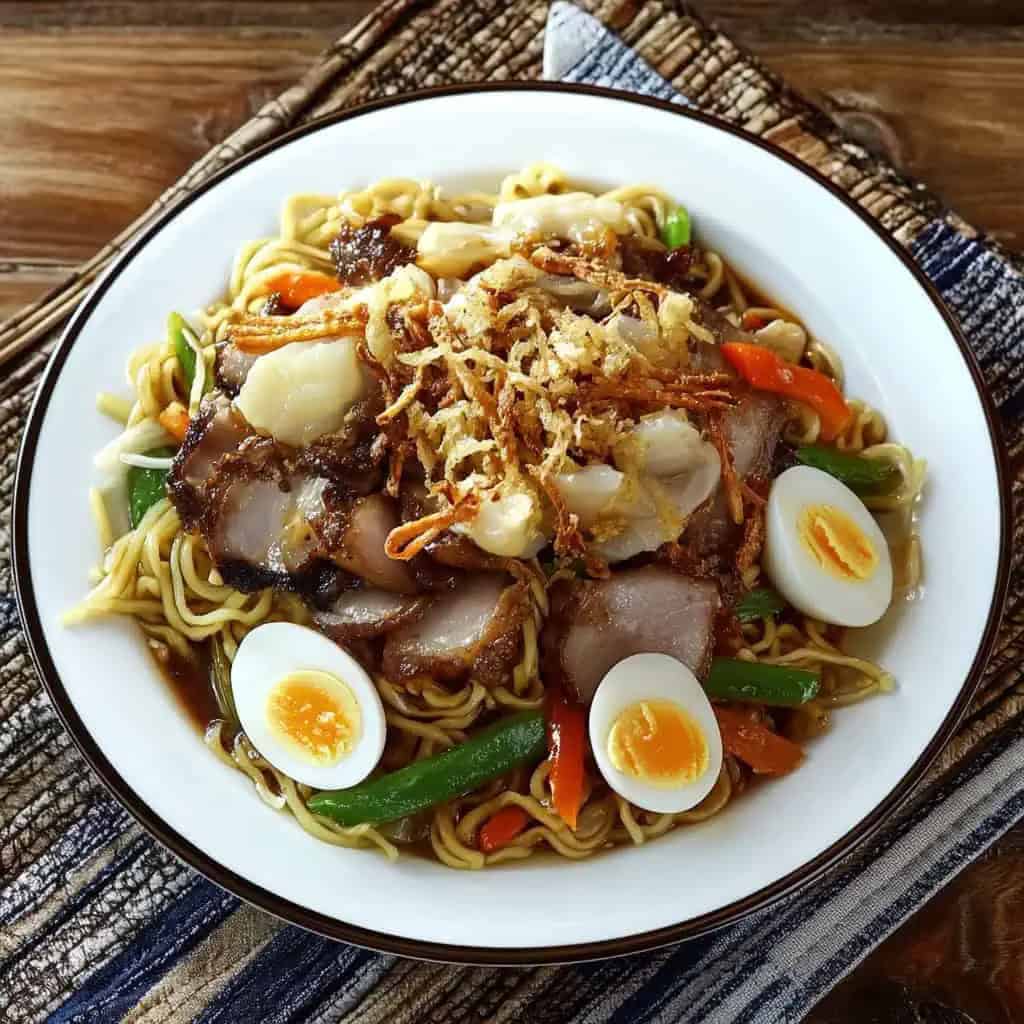
Can I prepare components of this dish ahead of time?
Yes! You can cook the meats, prepare the vegetables, and make the sauce a day ahead. Keep refrigerated separately and assemble just before serving. Cook the noodles fresh on the day of serving.
Why is my sauce not thickening properly?
Make sure to fully dissolve cornstarch in room temperature liquid before adding to hot liquid. Also, the sauce needs to reach a boiling point to activate the thickening properties of cornstarch.
Is Pancit Cabagan traditionally spicy?
No, the authentic version isn't spicy. However, you can add bird's eye chilies (siling labuyo) or chili garlic oil if you prefer some heat.
What makes Pancit Cabagan different from other pancit dishes?
Its distinctive sauce consistency (not too dry, not too soupy), the combination of pork belly and liver, and the generous topping of crushed chicharon set it apart from other Filipino noodle dishes.
Can I make a seafood version of this dish?
Yes! Replace the meats with shrimp, squid, and mussels for a delicious seafood variation. Reduce cooking time accordingly as seafood cooks faster than pork.
How do I achieve the authentic Isabela flavor?
The key is balancing the savory elements from quality chicken stock, using fresh ingredients, and not skimping on the crushed chicharon topping which adds the distinctive flavor and texture.
My family doesn't eat pork liver. Can I still make this dish authentic without it?
While liver adds a distinct richness, you can omit it and still have a delicious dish. Consider adding a bit more pork belly or even some chicken thighs for additional flavor.
Related
Looking for other recipes like this? Try these:

Authentic Pancit Cabagan Recipe
Equipment
- Wok (Kawali): For achieving the perfect stir-fry and sauce consistency
- Strainer (Salaan): For draining noodles and removing fried ingredients
- Sharp Knife (Matatalas na Kutsilyo): For julienning vegetables uniformly
- Large Mixing Bowl (Malaking Mangkok): For preparing and tossing ingredients
- Measuring Cups and Spoons (Panukat): For precise ingredient portions
- Wooden Spatula (Sandok Kahoy): For gentle stirring without breaking noodles
- Small Bowls (Mangkok): For organizing pre-measured ingredients
Ingredients
For the Noodles and Protein:
- 500 g fresh egg noodles pancit miki sariwa
- 200 g pork belly liempo, thinly sliced
- 100 g pork liver atay ng baboy, sliced
- 1 cup pork chicharon crushed
- 2 dozen quail eggs itlog ng pugo, hard-boiled
For the Vegetables:
- ½ head cabbage repolyo, julienned
- 1 bunch French beans abitswelas, julienned
- 1 carrot karot, julienned
- 4 cloves garlic bawang, minced
- 1 onion sibuyas, finely chopped
For the Sauce:
- 5 cups chicken stock sabaw ng manok
- ¼ cup soy sauce toyo
- 1 tablespoon hoisin sauce
- 2 tablespoon oyster sauce sauce ng talaba
- 3 tablespoon cornstarch gawgaw
- Fish sauce patis to taste
- Freshly ground black pepper paminta
- Salt asin to taste
For Serving:
- Lemon or calamansi
- Additional crushed chicharon
Instructions
- Reduce the heat to medium (160°C/320°F). Return the cooked noodles and half of the vegetable-meat mixture to the wok. Gently fold everything together until the noodles are evenly coated with sauce (hanggang mabalutan ng sauce ang pancit). Transfer to a serving plate.
- Start by bringing water to a boil and cook your fresh egg noodles until tender but still firm, about 3-4 minutes. Drain them and rinse with cold water to prevent sticking. Set aside.
- Season sliced pork belly with salt. Heat your wok until very hot and add oil. Fry the pork belly until golden brown and crispy, about 5-7 minutes. Remove from the wok and set aside.
- In the same wok, sauté minced garlic until fragrant, about 30 seconds. Add chopped onions and cook until they turn clear, about 2 minutes. Add sliced pork liver and stir-fry for one minute until just cooked through.
- Add julienned carrots, French beans, and cabbage to the wok. Stir-fry for 2 minutes until the vegetables are crisp-tender. Remove everything from the wok and set aside.
- Mix cornstarch with one cup of room temperature chicken stock until smooth. Pour the remaining four cups of chicken stock into the wok. Add hoisin sauce, oyster sauce, and soy sauce. Bring to a boil while stirring. Once boiling, slowly pour in the cornstarch mixture while stirring. Simmer until the sauce thickens enough to coat the back of a spoon, about 2-3 minutes. Season with fish sauce and black pepper to taste.
- Lower the heat to medium. Return the noodles and half of the vegetable-meat mixture to the wok. Gently toss everything together until the noodles are evenly coated with sauce.
- Transfer to a serving plate and top with the remaining vegetable-meat mixture. Add halved quail eggs and sprinkle generously with crushed chicharon. Serve hot with calamansi or lemon wedges on the side.
- For best results, serve immediately while the chicharon is still crispy. Each person can squeeze calamansi over their portion and add extra chicharon as they like.
Tips from Lola's Kitchen
- Use fresh miki noodles for authentic texture (pancit miki sariwa)
- Don't overcook the vegetables to maintain their crunch
- Prepare ingredients in advance (mise en place) for smooth cooking
- Save some cooking liquid from the noodles to adjust sauce consistency
- Toast chicharon briefly before crushing for extra crispiness
Nutrition
The Story Behind Pancit Cabagan
In the heart of Isabela province, nestled in the northern Philippines, lies a culinary treasure that has captivated food enthusiasts for generations - Pancit Cabagan. This distinctive noodle dish, born in the municipality of Cabagan, represents the fascinating intersection of Filipino ingenuity and Chinese culinary influence that has shaped much of Philippine cuisine.
The story of Pancit Cabagan begins in the early 20th century when Chinese merchants settled in Isabela, bringing with them their noodle-making expertise. These settlers, primarily from Fujian province, adapted their traditional recipes to local ingredients and tastes, creating what would become one of Isabela's most celebrated dishes. The adaptation was born of necessity, as Chinese traders sought to create familiar comfort food using ingredients available in their new home.
What sets Pancit Cabagan apart from other Filipino noodle dishes is its distinctive sauce - neither as thick as Pancit Palabok nor as dry as Pancit Canton. This unique consistency was developed to suit the palate of both Chinese settlers and local Isabelinos, creating a harmonious blend that has stood the test of time. The dish's signature combination of fresh egg noodles, tender pork, and crispy chicharon reflects the resourcefulness of early Chinese-Filipino communities in creating flavor profiles that would appeal to both cultures.
Local food historians note that the dish gained prominence during the town's feast days and celebrations, where it became a staple of community gatherings. The tradition of serving Pancit Cabagan during special occasions continues today, with many families passing down their own variations of the recipe through generations. Modern iterations of the dish maintain its core elements while sometimes incorporating additional local ingredients, demonstrating the dynamic nature of Filipino cuisine.
Today, Pancit Cabagan has transcended its origins to become a symbol of Isabela's rich culinary heritage. It represents not just a meal, but a testament to the cultural exchanges that have enriched Philippine gastronomy. The dish continues to evolve while maintaining its authentic character, beloved by locals and increasingly discovered by food enthusiasts seeking to explore the diverse world of Filipino noodle dishes.
As more people discover this regional specialty, Pancit Cabagan stands as a delicious reminder of how cultural integration, local ingredients, and culinary innovation can create something truly extraordinary. Whether enjoyed in a humble carinderia in Isabela or recreated in modern Filipino kitchens around the world, each plate tells a story of tradition, adaptation, and the enduring appeal of well-crafted comfort food.
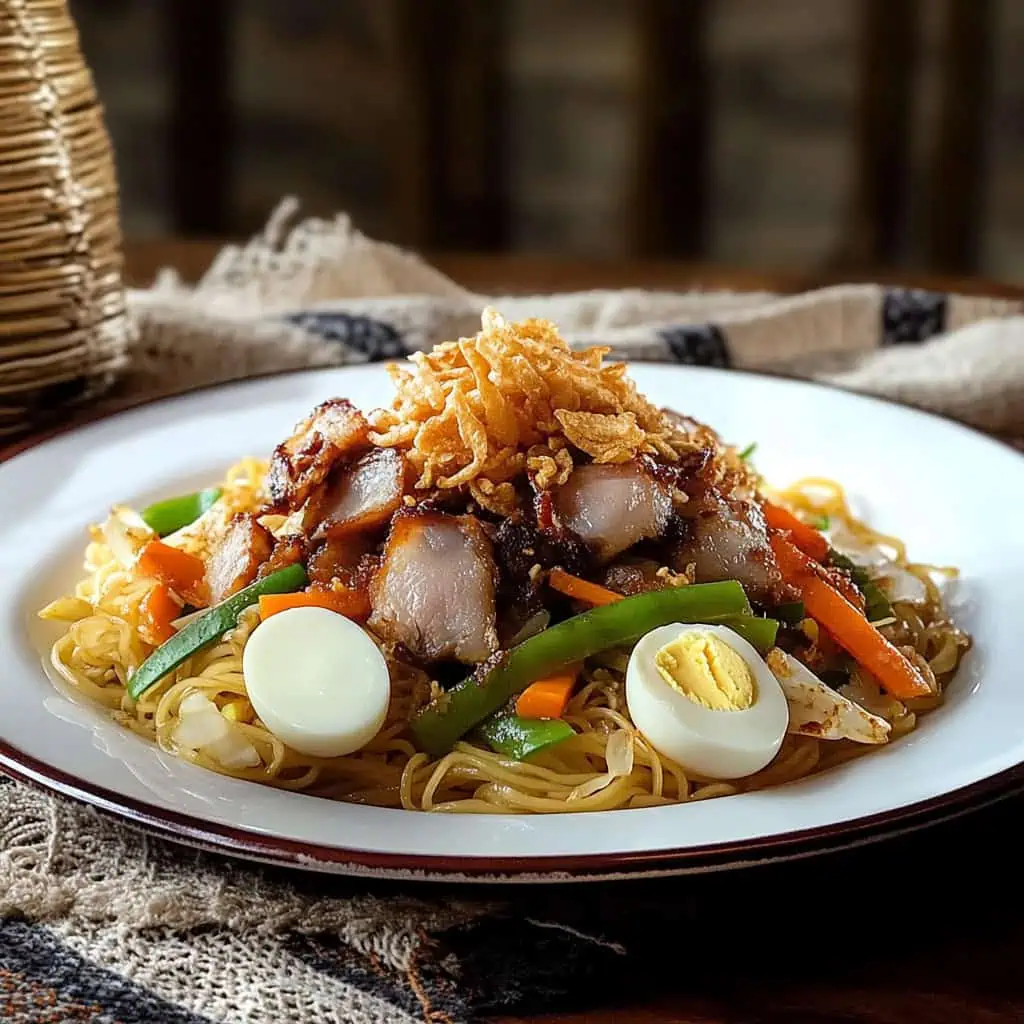





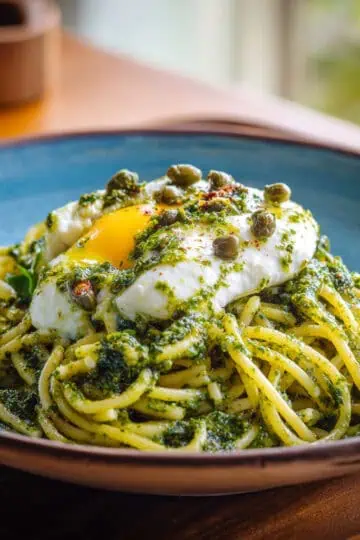
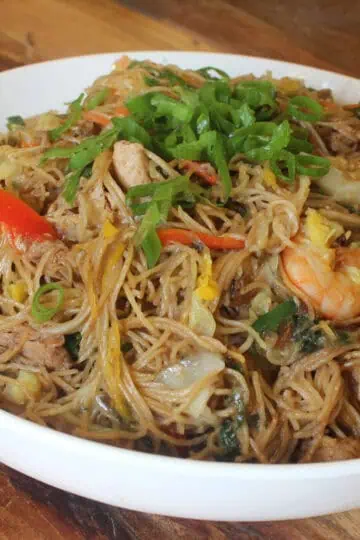
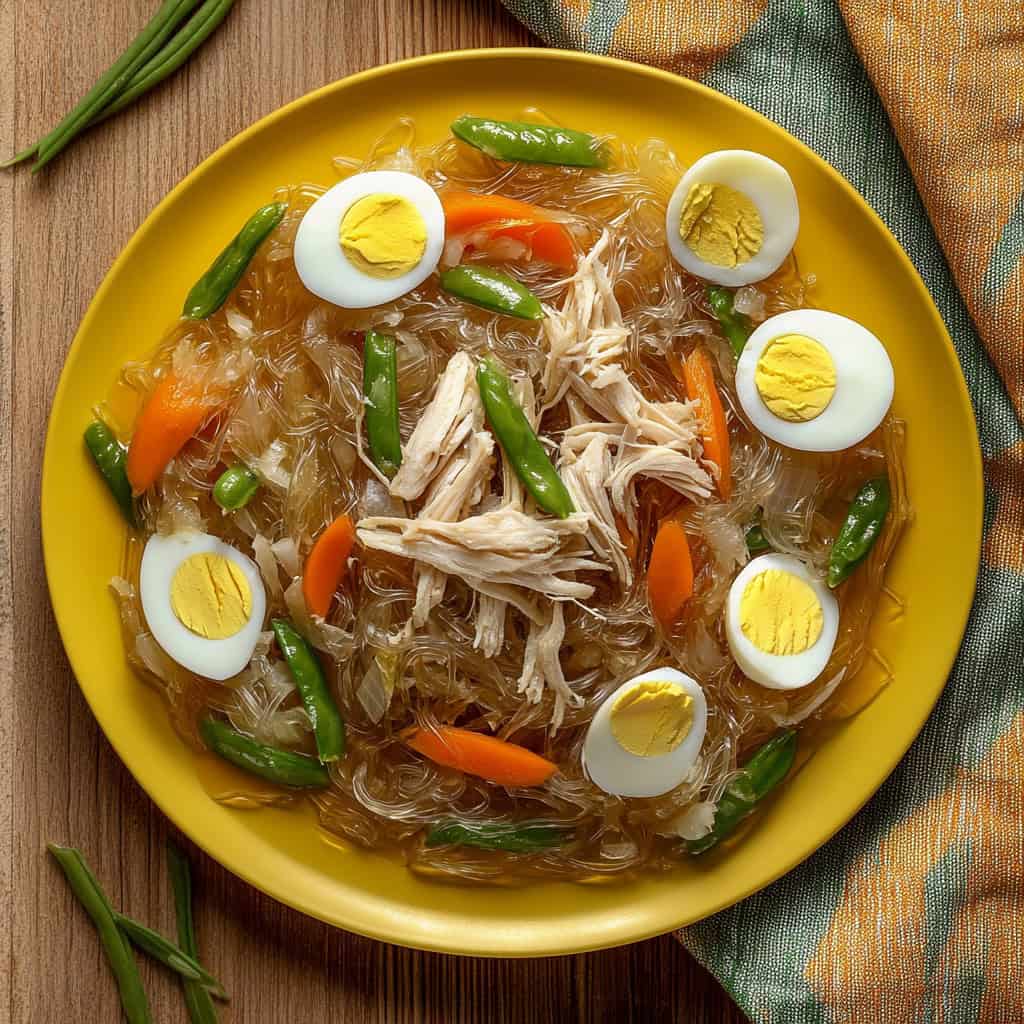
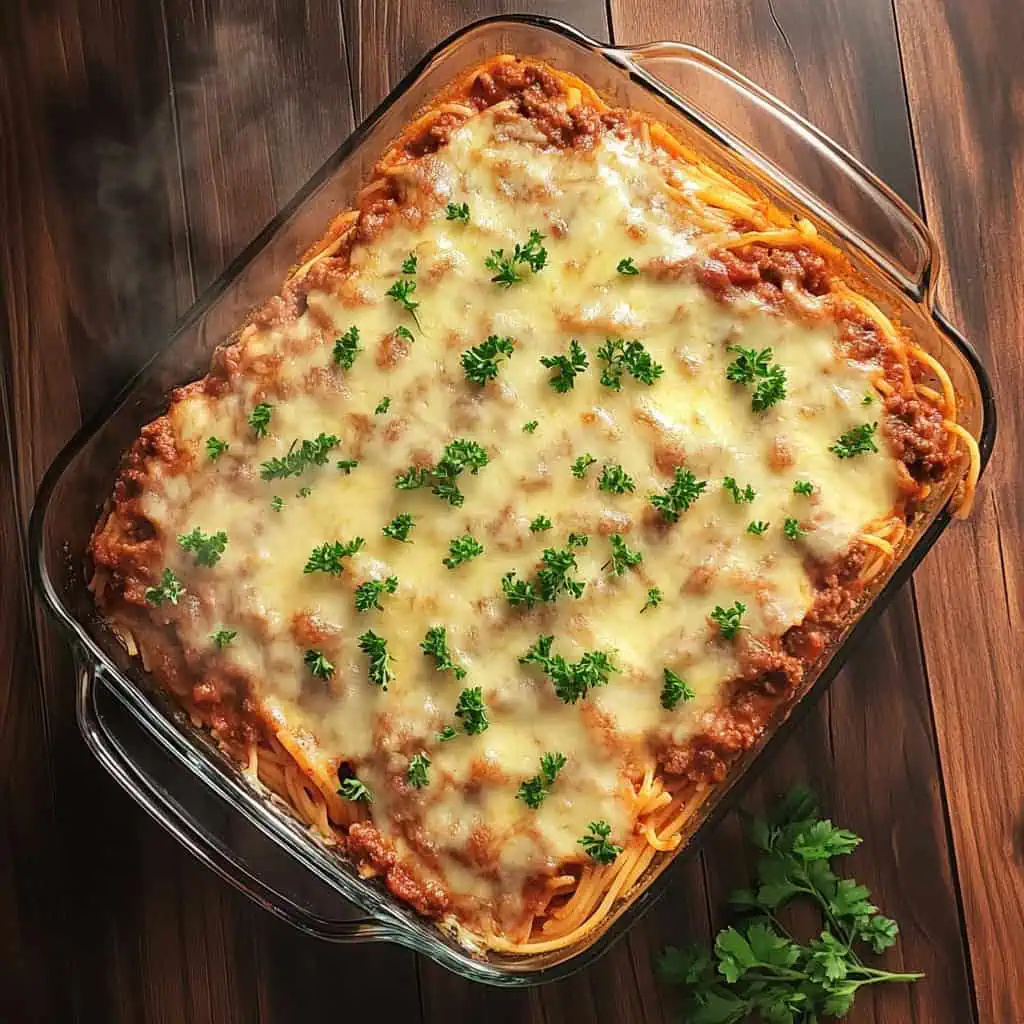
Comments
No Comments